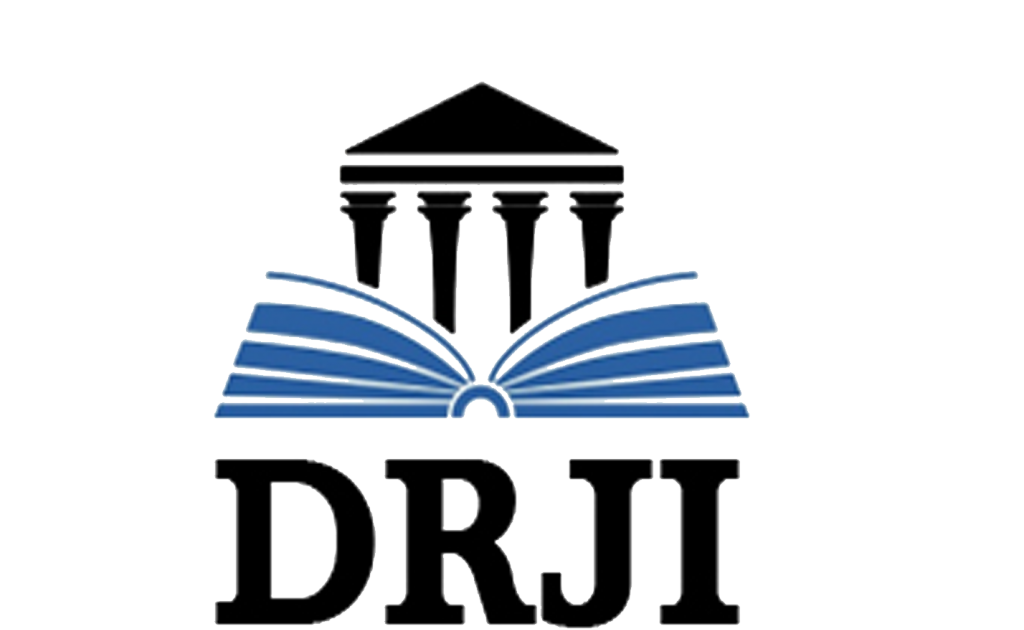Study of alkaloids present in the vine of the saragoza (Aristolochia elegans)
DOI:
https://doi.org/10.53591/rug.v134i1.1418Keywords:
Aristolochic acid, Saragoza (Aristolochia elegans), antidiarrhealantimicrobialAbstract
In Ecuador, Saragoza lily (Aristolochia elegans) is used as an infusion for the treatment of menstrual pains, as well as intestinal infections and diarrhea; in 2020 65.4% of diarrhea cases were in young adults and 7.2% in older adults having varied etiology. A qualitative and quantitative analysis of Saragoza bejuco (Aristolochia elegans) was carried out due to its importance that would demonstrate the presence of alkaloids and their possible antidiarrhealantimicrobial activity. The content of alkaloids present in Saragoza bejuco (Aristolochia elegans) was evaluated through a preliminary phytochemical screening, observing a color reaction and precipitation in the Dragendorff +++, Mayer +++ and Wagner +++ trials indicating the positive presence of alkaloids and also total alkaloids wereindicating the positive presence of alkaloids and likewise they were quantified in the determination of total alkaloids by the spectrophotometric method which resulted in 576.00 mg / L in 70% ethanolic extract, and finally the aristolochic acid was analyzed by the layer chromatography method fine which resulted in the Rf of 0.407 that is within the identification range.
References
Abdelgadir, A., Ahmed, E. M., & Eltohami, M. S. (Enero de 2020). Aislamiento, caracterización y determinación de la cantidad de ácidos aristolóquicos, compuestos tóxicos en Aristolochia bracteolata L. BioOne, 5(1).
Alexakis, P., & Siriopoulos, C. (1999). The international stock market crisis of 1997 and the dynamic relationships between asian stock markets: Linear and nonlinear Granger causality tests. Managerial Finance(25), 22–38.
AMA. (2013). American Marketing Association. Obtenido de Journal of Marketing Reseach: https://www.ama.org/publications/JournalOfMarketing/Pages/Current-Issue.aspx
Andreasen, A. (1994). Social Marketing: Its definition and Domain. Journal of Public Policy and Marketing, 13(Spring), 108-114.
Arcotel. (2018). Estadísticas Anuales Líneas Móviles. Recuperado el 26 de Enero de 2018, de Agencia de Regulación y Control de Telecomunicaciones: http://www.arcotel.gob.ec/servicio-movil-avanzado-sma/
Barboza, A. (2016). Sobre el Método de la interpretación documental y el uso de las imágines en la sociología. Sociedade e Estado, 21(2), 391-414.
Bartha, G. S., Tóth, G., Horváth, P., Kiss, E., Papp, N., & Kerényi, M. (Diciembre de 2019). Análisis de ácidos aristolóquicos y evaluación de la actividad antibacteriana de Aristolochia clematitis L. Biología Futura, 70(4).
Beutelspacher, C., Hernández Najarro, F., Dichi-Agüero, V. A., & Castro Padilla, I. (diciembre de 2020). Primer registro de Aristolochia micrantha Duch. (Aristolochiaceae) para Chiapas, México y su potencial farmacológico. Ciencias de Unicach, 14(1-2).
Blodgett, J., Lu, L.-C., & Rose, G. (2001). Ethical Sensitivity to Stakeholder Interest: A Cross-Cultrural Comparison. Journal of Academy of Marketing Science, 29(2), 190-202.
Bourhia, M., Haj Said, A., Chaanoun, A., Gueddari, F., Naamane, A., Benbacer, L., & Khlil, N. (Febrero de 2019). Detección fitoquímica y estudio toxicológico de las raíces de Aristolochia baetica Linn: evidencia histopatológica y bioquímica. Obtenido de https://academic.microsoft.com/paper/2914621618/reference/search?q=Phytochemical%20Screening%20and%20Toxicological%20Study%20of%20Aristolochia%20baetica%20Linn%20Roots%3A%20Histopathological%20and%20Biochemical%20Evidence.&qe=Or(Id%253D2120221084%252CId%2
Chiarelli, J., Marconi, M., Pistani, M., Waingarten, S., & Knopoff, E. (Junio de 2017). Sistema de farmacovigilancia: conocimiento y actitudes de los médicos del primer nivel de atención y tasa de notificación de efectos adversos para medicación antituberculosis. Revista Americana de Medicina Respiratoria, 17(2).
Claro. (Enero de 2018). Claro. Recuperado el 2 de Febrero de 2018, de Quienes Somos: https://www.claro.com.ec/personas/institucional/quienes-somos/
CNT-EP. (2018). La Corporación Nacional de Telecomunicaciones CNT EP. Recuperado el 2 de Febrero de 2018, de CNT: http://corporativo.cnt.gob.ec/historia-de-las-telecomunicaciones-en-el-ecuador/
Consejo General de Colegios Oficiales de Farmacéuticos. (2010). El papel del farmacéutico en la seguridad del paciente. Recuperado el 29 de Marzo de 2021, de El papel del farmacéutico en la seguridad del paciente: https://www.portalfarma.com/Profesionales/campanaspf/categorias/Documents/Documentos-Publica/2010_Informe_Tecnico_Seguridad_del_paciente.pdf
contributors, E. (29 de 07 de 2019). Recuperado el 18 de abril de 2021, de EcuRed: https://www.ecured.cu/index.php?title=Cant%C3%B3n_Naranjal_(Ecuador)&oldid=3480778
Cruz, M., Ruiz, A., Furones, J., & Palenzuela, I. (2015). Conocimientos sobre farmacovigilancia del personal de estomatología en municipios seleccionados. Revista de Ciencias Médicas La Habana , 21(3).
Drucker, P. (1984). The new meaning of corporate social responsi-bility. California Management Review, XXVI(2), 53-63.
Gómez, P. (2003). La gestión de marketing de ciudades y áreas metropolitanas: de la orientación al producto a la orientación al marketing. Cuadernos de Gestión, 3(1), 11-25.
González, E. A. (2015). Obtenido de scielo: http://scielo.sld.cu/scielo.php?script=sci_arttext&pid=S1028-47962015000200004#:~:text=Por%20medio%20del%20tamizaje%20fitoqu%C3%ADmico,extractos%20resultaron%20ser%20los%20flavonoides.
Gordhon, Y., & Pedayachee, N. (2020). Evaluating the knowledge, attitudes and practices of healthcare workers towards adverse drug reaction reporting at a public tertiary hospital in Johannesburg. International Journal of Africa Nursing Sciences, 12.
Green Paper. (2011). Green Paper on corporate social responsibility. Recuperado el 2018 de Enero de 2018, de Europa: http://europa.eu/legislation
Guerrero, M. P. (09 de 2012). Recuperado el 21 de 07 de 2020, de Jupiter.utm.: http://jupiter.utm.mx/~tesis_dig/11616.pdf
Huebla Quishpe, D. E. (2016). “Extracción aislamiento y purificación de alcaloides del extracto del tallo de Zaragosa (Aristolochia elegans)”. Recuperado el 20 de Junio de 2021, de DSpace Espoch: http://dspace.espoch.edu.ec/bitstream/123456789/4987/1/56T00632%20UDCTFC.pdf
Hunt, S. (1983). General theories and the fundamentalexplananda of marketing. Journal of Marketing, 47(4), 9-17.
Jiménez, G., Debesa, F., González, B., Ávila, J., & Pérez, J. (2006). El Sistema Cubano de Farmacovigilancia, seis años de experiencia en la detección de efectos adversos. Rev Cubana Farm, 40(1), 1-8. Obtenido de http://scielo.sld.cu/pdf/far/v40n1/far02106.pdf
Jiménez, G., García, A., Gálvez, A., Alfonso, I., Lara, M., & Calvo, D. (2014). Medicamentos notificados como productores de reacciones adversas graves en Cuba en un período de diez años. Revista Cubana de Salud Pública, 40(4), 263-275. Obtenido de https://www.medigraphic.com/pdfs/revcubsalpub/csp-2014/csp144c.pdf
Kotler, P., & Levy, S. (1969). Broading the concept of Marketing. Journal of Marketing, 33(January), 10-15.
Kotler, P., & Zaltman, G. (1971). Social marketing: An approach toplanned social change. Journal of Marketing, 35, 3-12.
Lema, D. J. (2018). Evaluación de la actividad anti-inflamatoria y citotóxica in vitro del extracto hidroalcohólico Ageratum conyzoides L. trabajo de titulaciòn, Escuela Superior Politécnica de Chimborazo, Facultad de Ciencia , Riobamba.
Lideres. (Enero de 2014). Revista Lideres. Recuperado el 12 de Enero de 2018, de En 20 años, la telefonía móvil superó las expectativas: http://www.revistalideres.ec/lideres/20-anos-telefonia-movil-supero.html.
Maignan, I., & Ferrell, O. (2004). Corporate social responsibility and marketing: an integrative framework. Journal of the Academy of Marketing Science, 32(1), 19-23.
Mata, J., Ortiz, M., Islas, H., Diaz, M., De León, V., & Tenorio, L. (Octubre-diciembre de 2017). Impacto de una intervención educativa en los conocimientos en farmacovigilancia y en el reporte de reacciones adversas a los medicamentos de profesionales de la salud en un hospital público de segundo nivel de atención en el Estado de México, México. Revista Mexicana de Ciencias Farmacéuticas, 48(4).
Maza, J., Aguilar, L., & Mendoza, J. (2018). Farmacovigilancia: un paso importante en la seguridad del paciente. Medigraphic, 72(1), 47-53.
Miron, D., Petcu, M., & Sobolevschi, M. (2011). Corporate Social Responsibility and sustainable competitiveness. Amfiteatru Economic Journal, A.S.E.(29), 163-180.
Muberra, G., & Perihan, E. (Enero de 2019). Healthcare professionals pharmacovigilance knowledge and adverse drug reaction reporting behavior and factors determining the reporting rates. Journal of Drug Assessment, 8(1).
Ramos, J., & Periáñez, I. (2003). Delimitación del Marketing con Causa o Marketing Social Corporativo mediante el análisis de empresas que realizan acciones de responsabilidad social. Cuadernos de Gestión, 3(1), 65-82.
Romero, K. (Abril-Junio de 2018). El conocimiento de la Farmacología en el profesional de enfermería. Enfermería Investiga, Investigación, Vinculación, Docencia y Gestión, 3(2).
Ruiz, A., García, A., Jiménez, G., Alfonso, I., Pérez, B., & Carrazana, A. (2013). Farmacovigilancia de fitofármacos y apifármacos en Cuba durante 2006-2010. Revista Cubana de Plantas Medicinales, 18(2), 173-186. Obtenido de http://scielo.sld.cu/pdf/pla/v18n2/pla02213.pdf
Sáez, M., Sánchez, N., Jiménez, S., Alonso, N., & Valverde, J. (Marzo-Abril de 2016). Tratamiento del dolor en el anciano: opioides y adyuvantes. Revista de la Sociedad Española del Dolor, 23(2).
Shung Wu, T., Lung Tsai, Y., Chung Kuo, P., & Lin Wu, P. (Mayo de 2017). Constituyentes de las hojas de Aristoloquia elegans. American Chemical Society.
Shung Wu, T., Lung Tsai, Y., Chung Kuo, P., & Lin Wu, P. (Mayo de 2018). Constituyentes de la raíz y el tallo de Aristoloquia elegans. American Chemical Society.
Telefónica S.A. (2018). Movistar. Recuperado el 3 de Febrero de 2018, de Historia de Movistar: https://www.movistar.com.ec/
Torres, B. (2006). Metodología de la Investigación. Mexico D.F: Pearson.
Trabanca, Y., Jiménez, G., Alfonso, i., Pavón, K., & Albear, F. (Marzo-Abril de 2018). Implementación del Programa de Notificación de Efectos Adversos por Pacientes en Guantánamo. Revista de Información Científica, 97(2).
Vaaland, T., Heide, M., & Grønhaug, K. (2008). Corporate social responsibility: investigating theory and research in the marketing context. European Journal of Marketing, (9/10), 927-953.
Vázquez, M. (2011). Investigación en educación matemática: objetivos, cambios, criterios, método y difusión. Education Siglo XXI, 29(2), 173-198.
Vicente, M. Azucena; Mediano, Lucía; . (2002). Propuestas para una segmentación estragégica del mercado ecológico . Cuadernos de Gestión, 2(1).
WBCSD. (2012). World Business Council for Sustainable Development,. Recuperado el 15 de Enero de 2018, de . Corporate social responsibility: Meeting changing expectations [pdf].: http://www.wbcsd.org
Published
How to Cite
Issue
Section
License

This work is licensed under a Creative Commons Attribution-NonCommercial-NoDerivatives 4.0 International License.

This work is licensed under a Creative Commons Attribution-NonCommercial-NoDerivatives 4.0. International License.
You are free to:
- Share — copy and redistribute the material in any medium or format
- The licensor cannot revoke these freedoms as long as you follow the license terms.
Under the following terms:
- Attribution — You must give appropriate credit , provide a link to the license, and indicate if changes were made . You may do so in any reasonable manner, but not in any way that suggests the licensor endorses you or your use.
- NonCommercial — You may not use the material for commercial purposes .
- NoDerivatives — If you remix, transform, or build upon the material, you may not distribute the modified material.
- No additional restrictions — You may not apply legal terms or technological measures that legally restrict others from doing anything the license permits.































